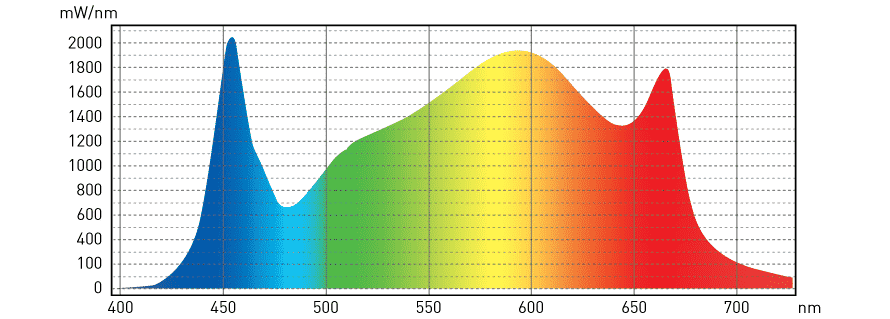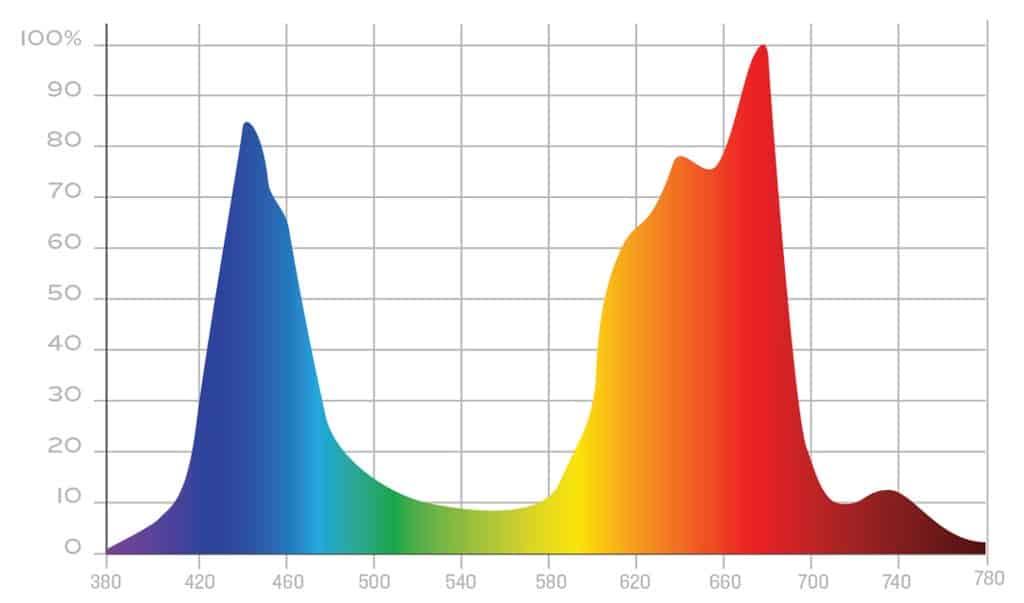Efficacy
White-light LED companies have recently taken to claiming that above all, efficacy is the most important feature of a lighting fixture, some going so far as to boast the efficacy of a single diode, not the entire fixture. They claim a fixture’s spectral quality is secondary to efficacy, and warn against companies that claim their spectrum is specifically tuned for the benefit of plants. However, this is a false assertion and a deliberate misrepresentation of the numbers to mislead consumers.
Efficacy represents a light’s capacity for turning electrical energy into photons, and is merely a measurement of how many photons within the PAR range a fixture emits per second. But since not all light within 400 to 700 nanometers is used by a plant in equal amounts, a light’s spectrum is vital to the growth of plants. It’s become well known that blue light is the most important part of the light spectrum for vegetative growth, while red light is ideal for the flowering cycle. For this reason, reputable LED grow light manufacturers engineer their spectrum to focus on the parts of the spectrum that most benefit plants, not humans.
White-light LEDs produce a large amount of green and yellow light. While these spectrums play a vital role in plant development, they are effective in considerably smaller amounts than red and blue light. Thus the ratio of light spectrum becomes very important. The amount produced by white light LED manufacturers far exceed the amount a plant can actually absorb, and more than 50% of that light is merely reflected from the plant’s surface, increasing the temperature of the grow environment. Read more here.



